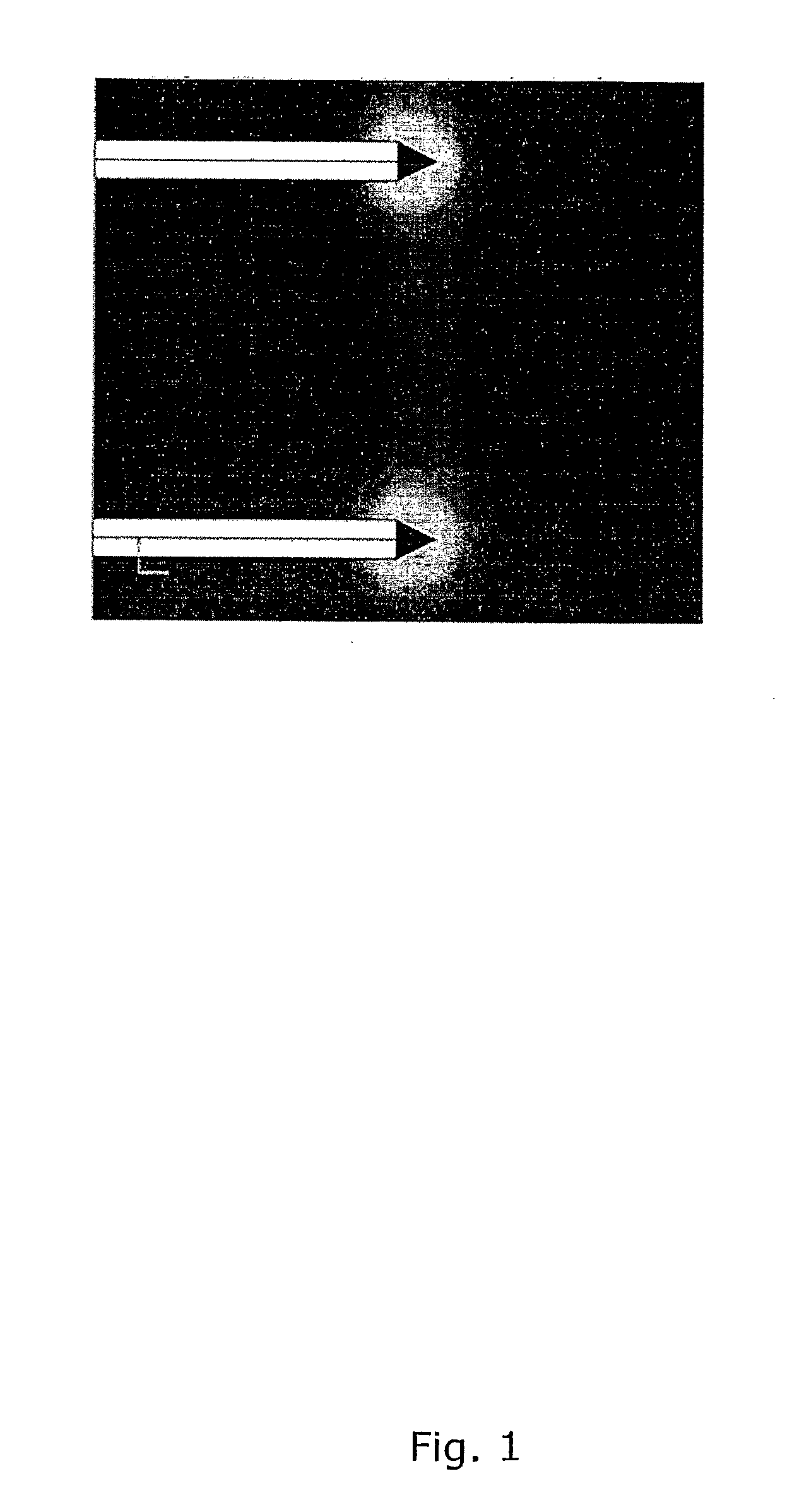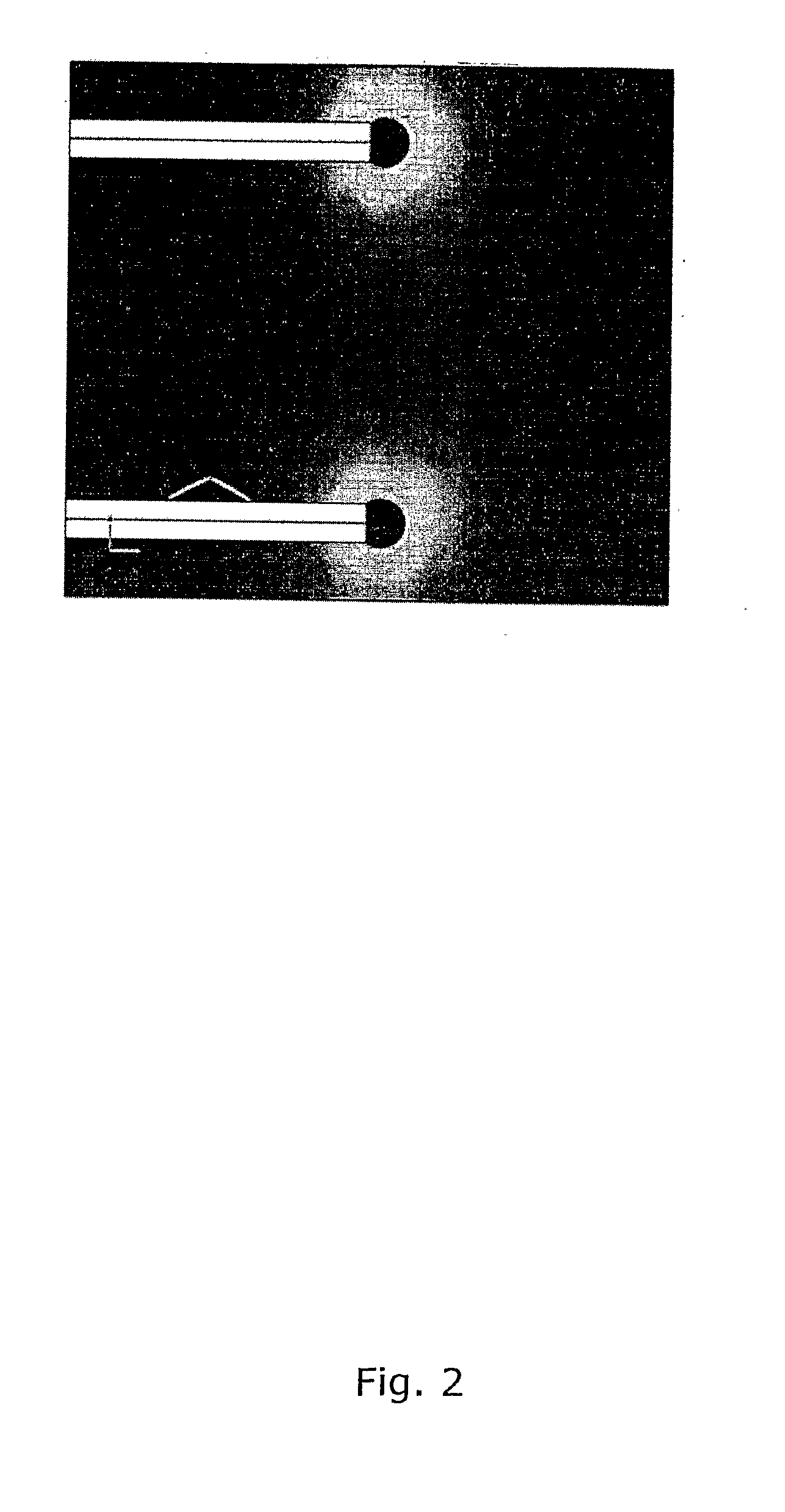Electroporation device for improved electrical field control
a technology of electroporation device and electrical field control, which is applied in the field of electroporation device and a method, can solve the problems of increasing length difficulty in achieving the effect of uniform field, and enhanced field geometries based on placement of terminal ends of multiple electrotherapeutical devices in two or three directions
- Summary
- Abstract
- Description
- Claims
- Application Information
AI Technical Summary
Benefits of technology
Problems solved by technology
Method used
Image
Examples
Embodiment Construction
[0143]FIGS. 1 and 2 shows the resultant electrical field strength computer simulation around two different sets of electrotherapeutic devices with point shaped electrodes (only the tips are un-insulated) of an electrical pulse between poles of the electrotherapeutic devices, the test being performed by the inventors. FIG. 1 shows the electrical field induced by a set of prior art electrotherapeutic devices having pointed ends. Around the edges and points provided by the angles between the surfaces of the electrodes, so-called hot spots of high intensive energy are created, which will create a burning or scarring of the tissue in the region of the hot spot. In ablation procedures this is not so relevant because the purpose is to cause cell death. However in electroporation this may be highly undesirable, since cell death in itself may be undesirable, or because it may change the electric properties of the tissue, making it difficult to control the process of applying the field. In FI...
PUM
 Login to View More
Login to View More Abstract
Description
Claims
Application Information
 Login to View More
Login to View More - R&D
- Intellectual Property
- Life Sciences
- Materials
- Tech Scout
- Unparalleled Data Quality
- Higher Quality Content
- 60% Fewer Hallucinations
Browse by: Latest US Patents, China's latest patents, Technical Efficacy Thesaurus, Application Domain, Technology Topic, Popular Technical Reports.
© 2025 PatSnap. All rights reserved.Legal|Privacy policy|Modern Slavery Act Transparency Statement|Sitemap|About US| Contact US: help@patsnap.com



